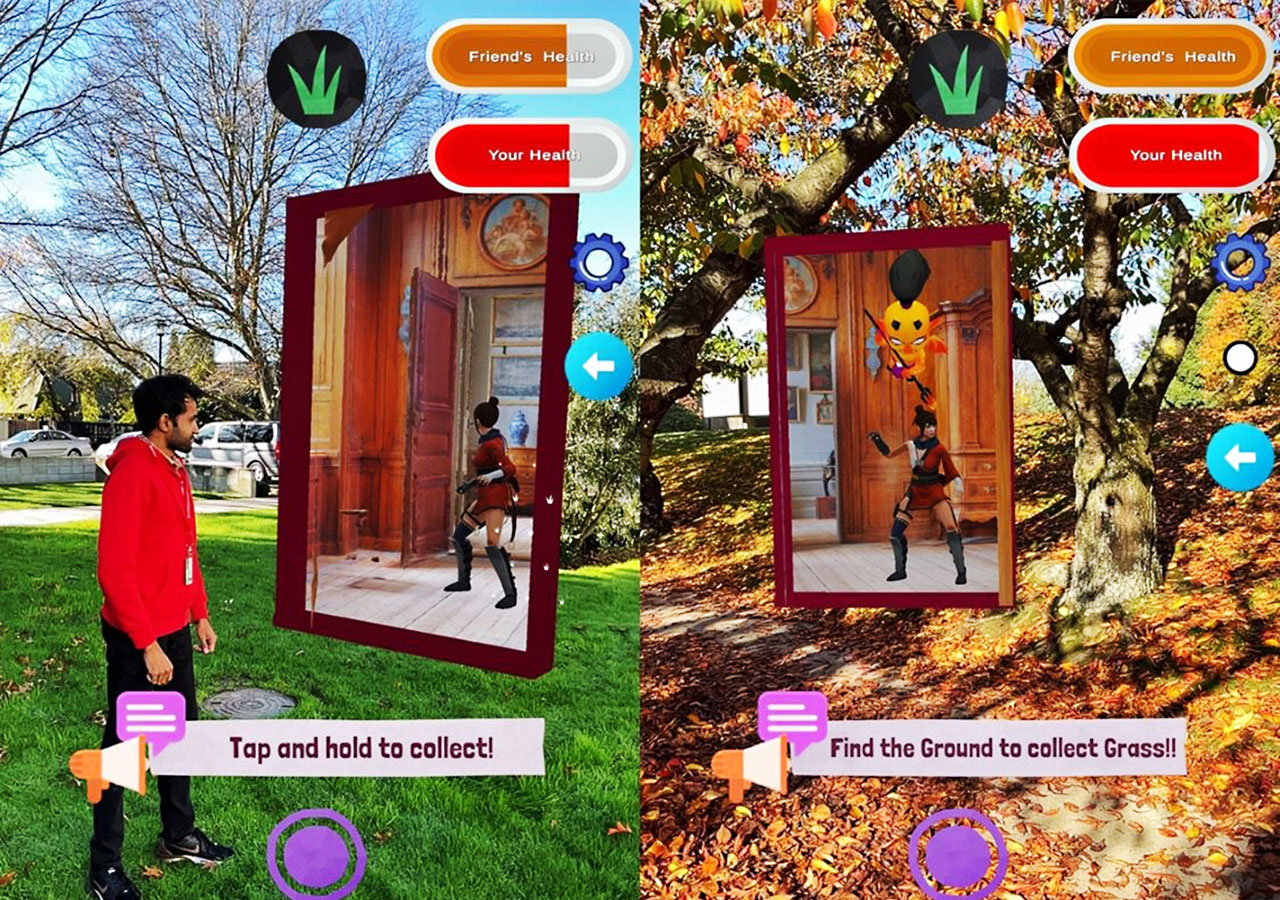Connecting Remote Places and Players with a Location-Based Augmented Reality Game Design
2022 – 2025

This project explores how multiple co-located and remote players can connect with each other and their surroundings through a location-based augmented reality game (LBARG). The game design strives to integrate real-world environments seamlessly into gameplay, offering an unparalleled gaming experience.
For that purpose, “ARrive” relies on Augmented Reality (AR) technology, serving as a conduit for sharing remote locations with players. This gameplay experience aims to facilitate spatial presence and immersion so that players become active participants with their senses entangled in an interplay of physical and virtual realms.
Players can use LiDAR-enabled devices such as iPhone 12 Pro and 2022 iPad Pro to scan their surroundings. This entire process can be done through the game during the gameplay. Once scanned, players can share their space using one of three visualisation methods: AR window, AR overlay and AR tabletop mode.
This game design requires players’ active participation. For example, one game level includes a remotely shared space engulfed in flames. Players must explore their physical environment to gather resources, such as a fire extinguisher, which they can then share virtually through the AR interface with the remote player in need.
“ARrive” leverages real-time LiDAR scanning within the game to bring virtual objects to life. In the example of crafting a fire extinguisher, players utilise LiDAR technology to create a digital twin of the physical object, enabling them to interact with it virtually while remaining connected to the real world.
We ran a proof-of-concept trial to validate this with 32 participants further, and the results resounded with affirmation and excitement as participants shared their enthusiasm for this game design revelation.
“I like to be more active, so this (game design) made me feel inside the game. When I’m just in front of a screen playing a video game, usually, I don’t feel inside. So, I want to continue playing with this one. I feel like I want to go in there,” said a user study participant.
By seamlessly integrating the virtual and real worlds and fostering collaboration, “ARrive” paves the way for the future of location-based gaming, encouraging developers to create captivating experiences that promote collaboration and well-being.
Acknowledgements
This study received funding from the University of Canterbury as part of the Applied Immersive Gaming Initiative (AIGI).
Researcher and Contact
Supervisory Team
- Prof. Stephan Lukosch, HIT lab NZ, University of Canterbury
- Assoc. Heide Lukosch, HIT lab NZ, University of Canterbury
Research Outputs
Sri Wickramasinghe Y., Lukosch S., and Lukosch H. (2023) Designing Immersive Multiplayer Location-Based Augmented Reality Games with Remotely Shared Spaces. In Becu N (Eds). Simulation and Gaming for Social and Environmental Transitions.: Proceedings of the 54th Conference of the International Simulation and Gaming Association: 204-214. https://shs.hal.science/halshs-04209935
People

Yasas Sri Wickramasinghe

Stephan Lukosch

Heide Lukosch
